The project is built offering a contemplative immersion in it, inside a large horizontal house, whose "folded" project forms a new wooden canopy, a topography that houses a village of artisans. By creating an architecture with simple volumes and transforming the traditional project of a shed roof, the architecture studio achieves a timeless construction with high environmental performance, at the service of the well-being of its occupants.
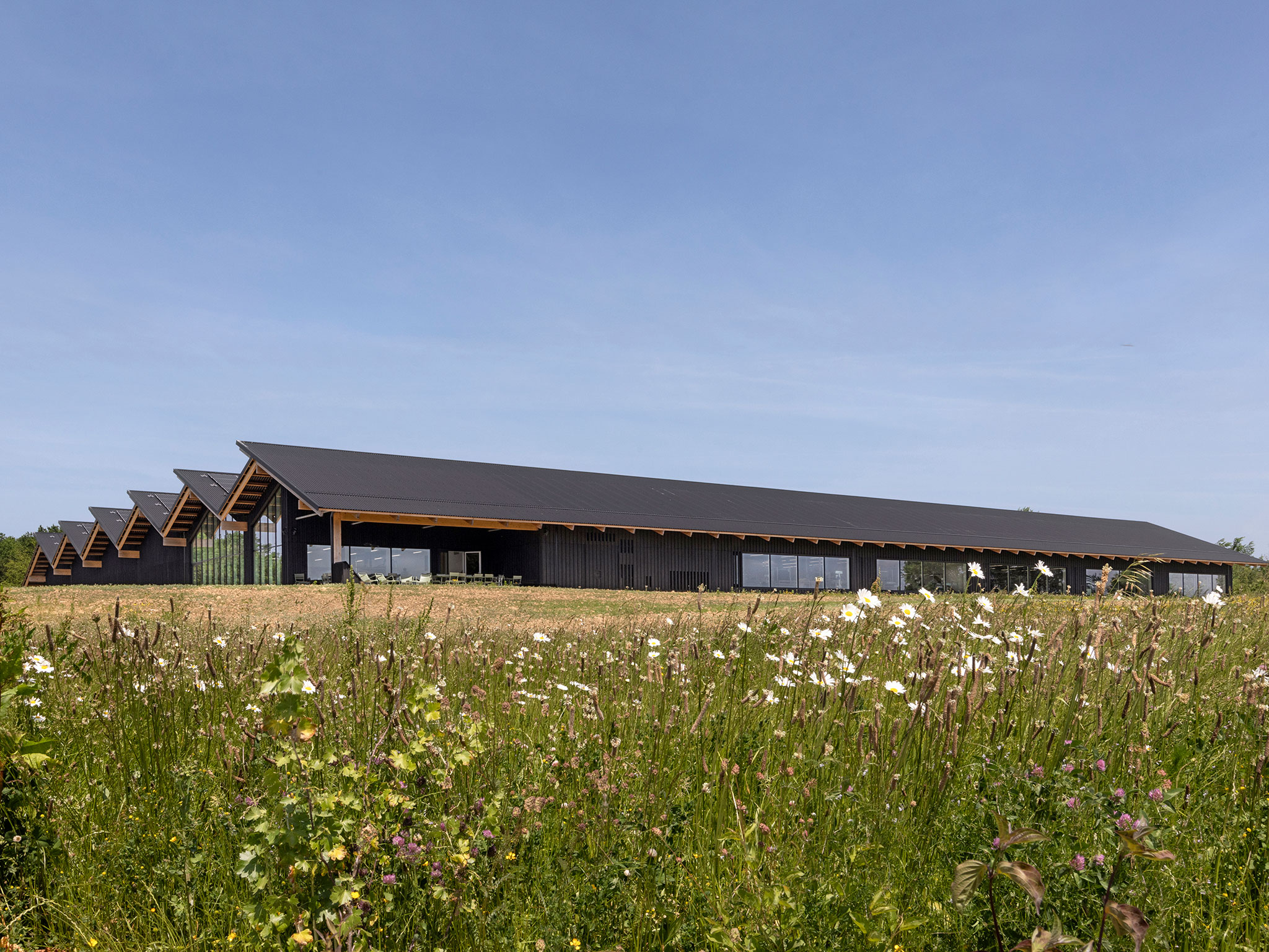
Sormonne Leather Goods by Coldefy. Photograph by Gautier Deblonde.
Project description by Coldefy
"The Maroquinerie de la Sormonne project is part of a formerly cultivated natural space, in the heart of a region with a rural and forest tradition. Against the backdrop of a tree-lined valley and reed beds sheltering the nests and broods of marsh birds, time seems to have stood still like a painting by Renoir.
In this unspoilt natural environment, the project offers a contemplative immersion within a large horizontal house, whose ‘folded’ design forms a new canopy of wood, a topography sheltering an artisan village.
This reference to the symbolism of the house, a place of life but also a place of history, of heritage, of family transmission, its inscription in the surrounding nature, and the challenge of revisiting the archetypal workshop and reinventing the work environment guided the whole conception of the project.
By creating an architecture with simple volumes and transforming the traditional design of the shed roof in an unprecedented way, we imagined for Hermès the future of the production workshop: timeless, bioclimatic architecture to enhance the well-being of its occupants".
Thomas Coldefy and Isabel Van Haute
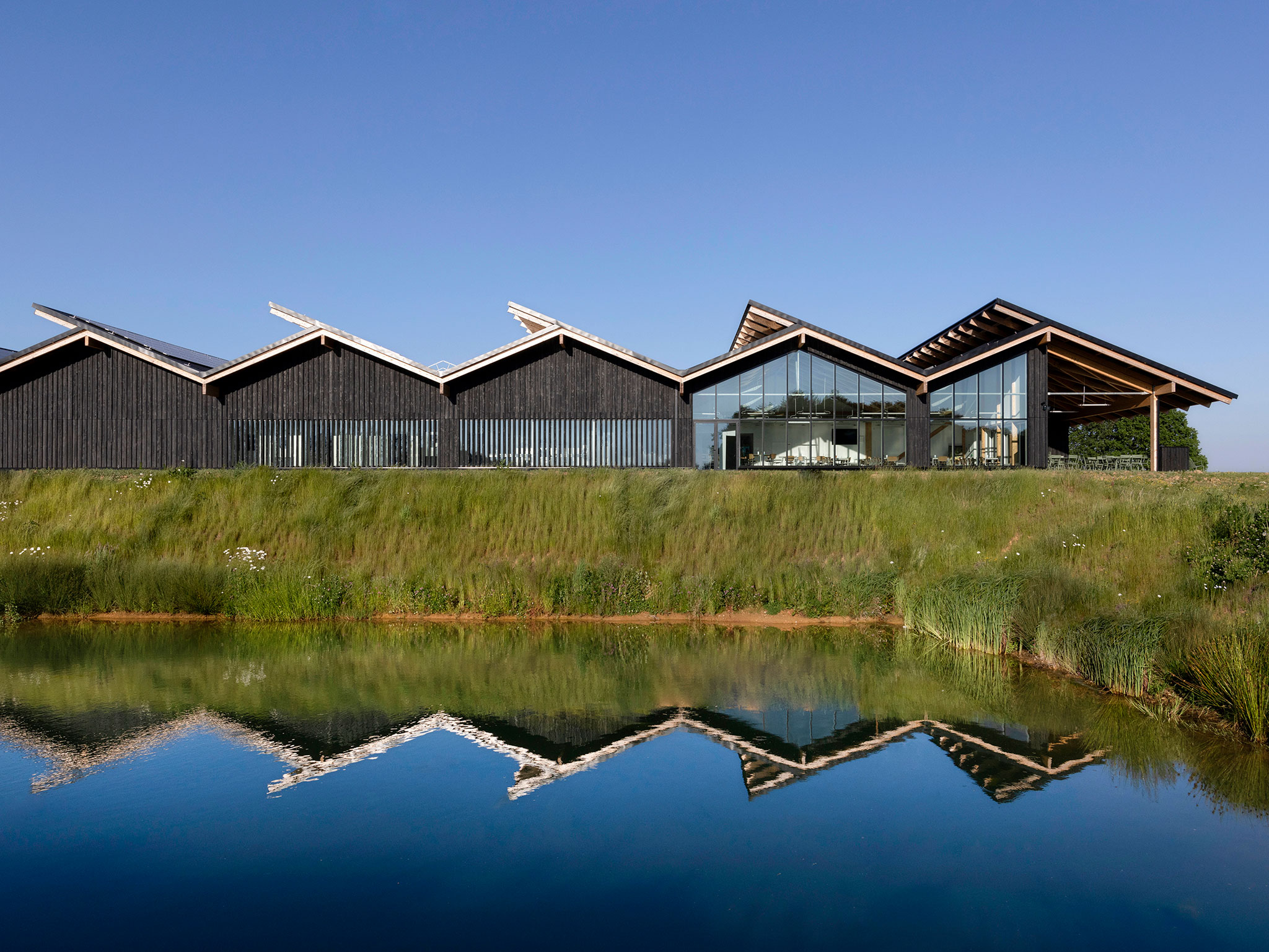
Sormonne Leather Goods by Coldefy. Photograph by Gautier Deblonde.
Hermès entrusted Coldefy with the design of its second leather goods factory in the Ardennes. The project was designed according to our signature approach: a sensitive and pragmatic vision of architecture that interacts with the environment and respects its identity.
With the Maroquinerie de la Sormonne, Coldefy revisits the archetypal workshop, reinvents the work environment for the benefit of the artisans, and creates a high environmental performance building.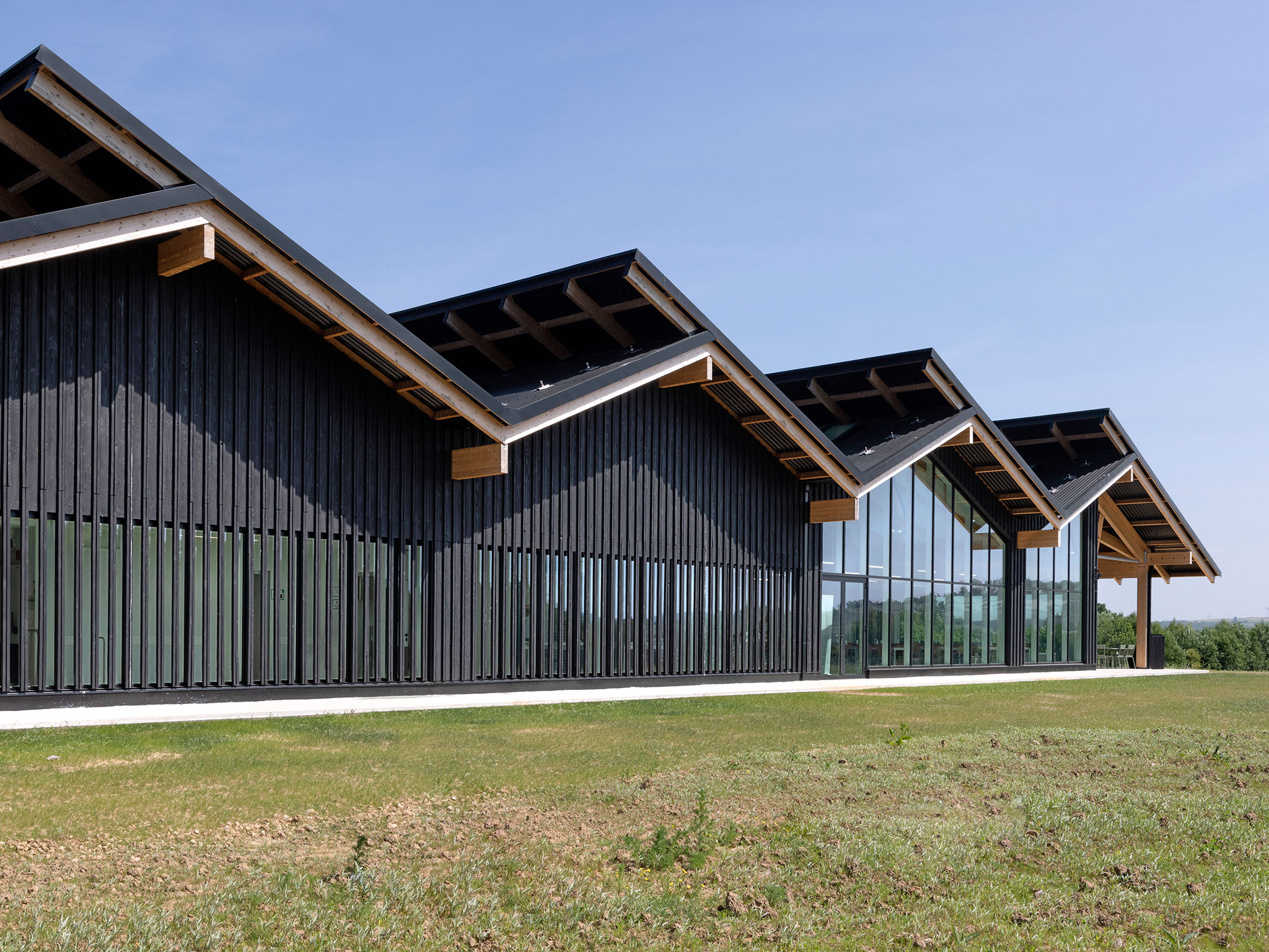
Sormonne Leather Goods by Coldefy. Photograph by Gautier Deblonde.
The architectural approach
Revisiting the archetypal production workshop
The challenge of the project lies in a paradigm shift: to revisit the industrial building and the stereotypes imposed by process and production logics.
From the outside, the shed roof, evocative of the industrial world, provides optimum light for the craftsman’s work. The roof has been redesigned to highlight the double sloped roof, the symbol of the house, on the north side, with an overhang that protects it from southern light.
Inside, the ubiquitous “diagrid” timber frame continues the symbolism of the house. In this subtle domestic atmosphere, the new leather goods workshop welcomes craftsmen in a setting conducive to concentration and the sharing of skills and knowhow, the foundation of the Hermès artisanal model.
Sormonne Leather Goods by Coldefy. Photograph by Gautier Deblonde.
A resilient structure
The 5,700 sqm building is clad in burnt wood cladding framing large glass facades.
The basic parameters of the workshop space were redefined by multiplying its proportion by 11.5 m and adopting its simple house section with northfacing dormers.
The plan is a direct translation of the ideal functional layout. A set of 4 cutting workshops defines
the heart of the leatherworks. The size and proportions of these workshops can be easily adapted by reorganizing the partitions within the given structural grid. Large cantilevers running the lengthof the building house the exterior porches and terraces.
The entire structure has been designed to be multifunctional, flexible, adaptable, resilient and reversible over time, as required by today’s and tomorrow’s workspaces.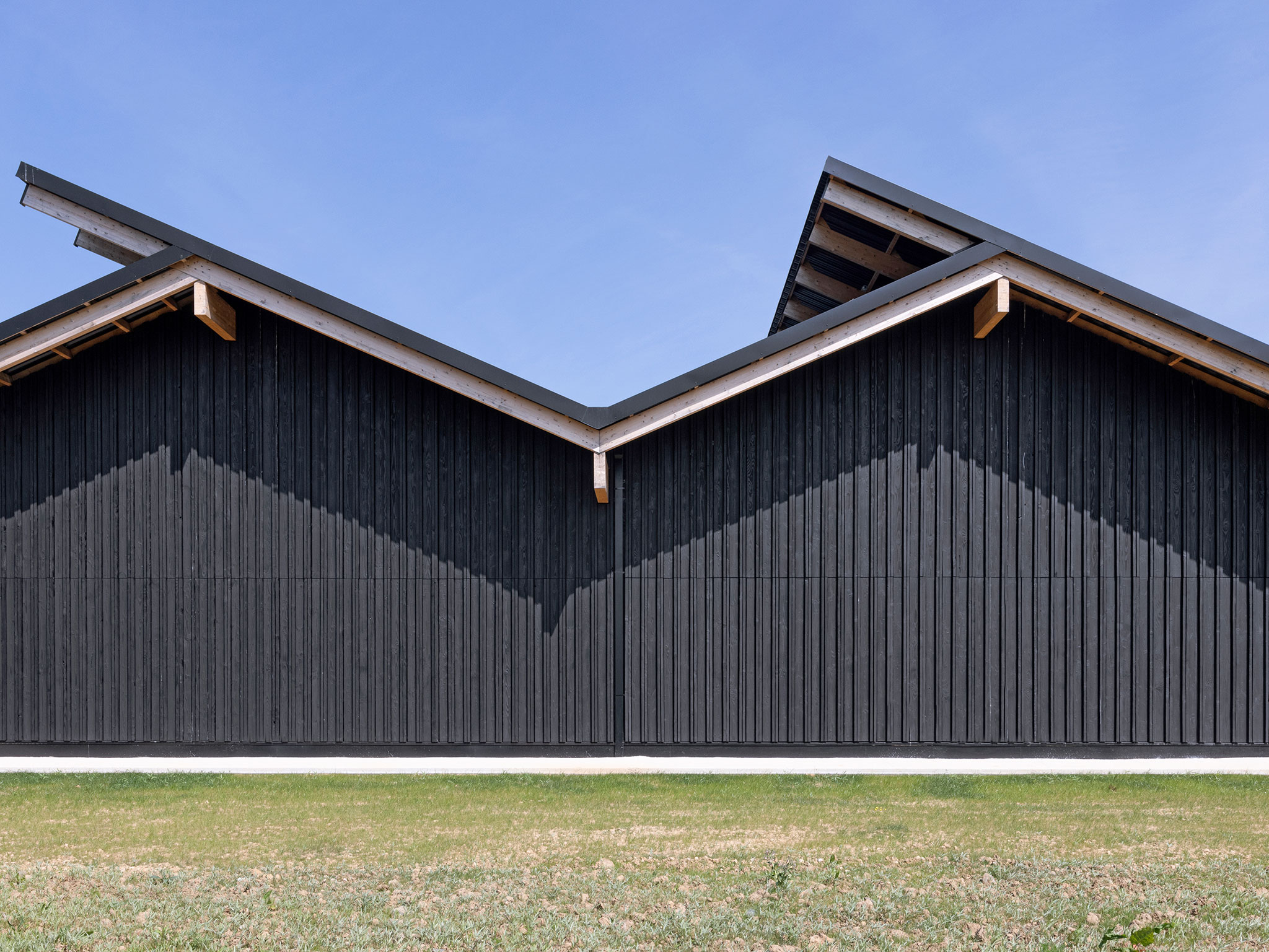
Sormonne Leather Goods by Coldefy. Photograph by Gautier Deblonde.
The materials
The project chose to build in wood, both for its carbon footprint and to use a renewable resource. The primary structure is wood, with only a concrete floor slab.
The facades are designed with dark-tinted aluminium joinery and burnt-wood cladding, held together by a timber frame, sometimes openwork to become a claustra, sometimes solid.
The wood is sourced locally, from Douglas fir, a species harvested in the Ardennes.
Sormonne Leather Goods by Coldefy. Photograph by Gautier Deblonde.
Originating from a traditional 18th century Japanese technique for making wood rot-proof, this original treatment gives the wood exceptional longevity and strength. Maintenance-free, with increased resistance to fire and UV, burnt wood has a lifespan of over 80 years. The material was also chosen for its aesthetic appeal, ranging from light gray to deep blacks with bluish highlights.
The roof is clad in black steel cladding, a shade reminiscent of burnt wood.
Sormonne Leather Goods by Coldefy. Photograph by Gautier Deblonde.
The environmental approach
A well-preserved ecosystem
Like Hermès, the Maroquinerie de la Sormonne blends into its environment with simplicity, discretion, and high standards.
Located in an industrial zone in the Ardennes, in the heart of an 8-hectare park, it takes advantage of the site’s many assets: generous biodiversity, a beautiful skyline, views over farmland and remarkable landscape features.
Committed to preserving ecosystems, Hermès and Coldefy worked with environmental experts to safeguard the habitat of the forty or so species of birds and amphibians found near the building. The many trees on the site, including several old oaks, were preserved to create a plant corridor enabling species to migrate throughout the plot. Local species, including an orchard were also planted to create spaces conducive to the development of biodiversity and harmonious landscaping.
Given the hydromorphic conditions of the site and the analysis of the flora and fauna, the project is designed to limit its impact on the existing environment and to enhance it.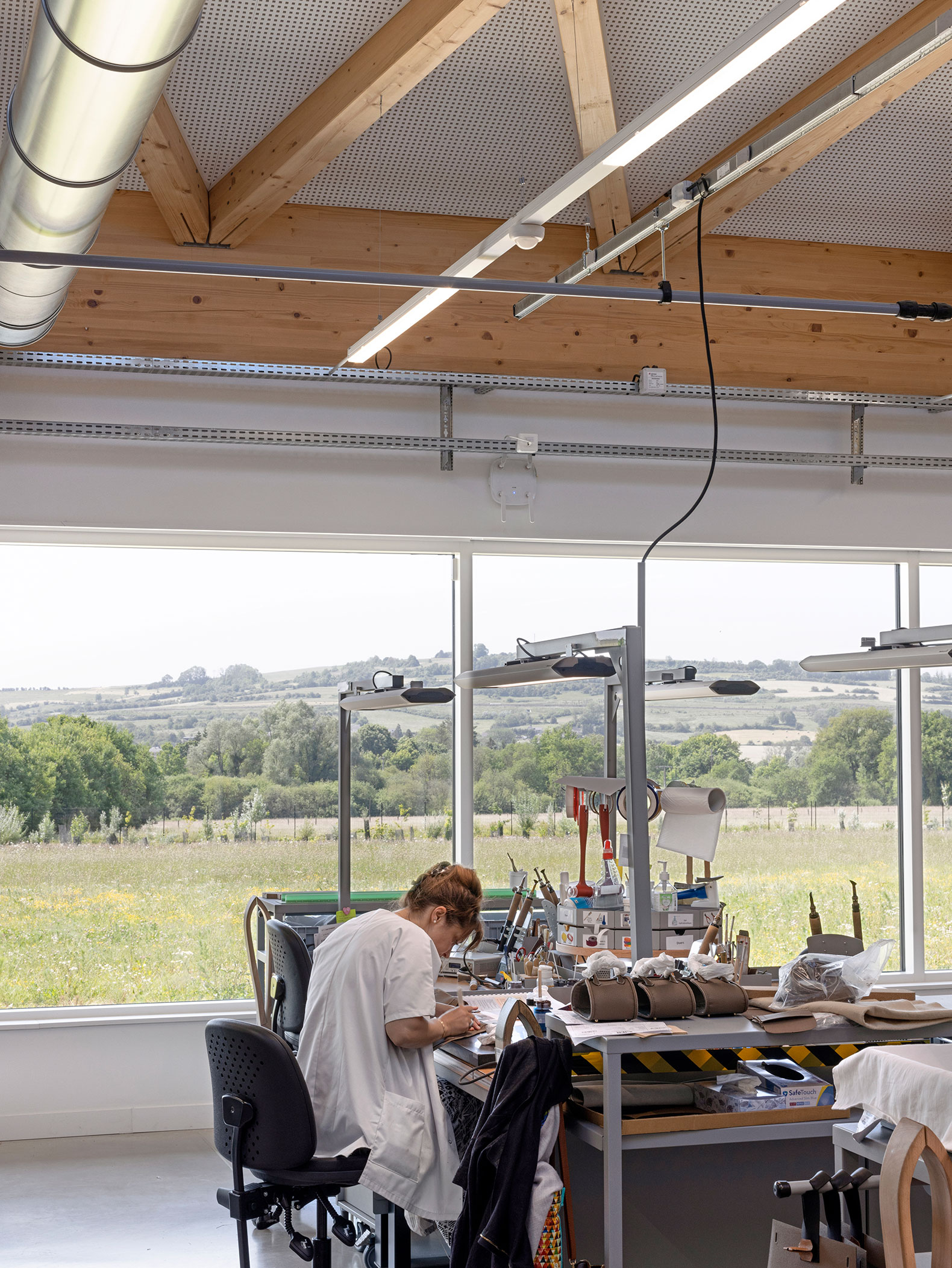
Sormonne Leather Goods by Coldefy. Photograph by Gautier Deblonde.
Bioclimatic design
The Maroquinerie de la Sormonne supports Hermès’ and Coldefy’s environmental goals and, has been designed to meet E4C2 certification standards.
With these goals in mind, optimizing the construction involved selecting its topographical position to limit the site’s environmental impact, creating water recovery meadows and ditches for phyto-purification, using low carbon materials such as the timber on the structure and facades, and installing 1,900 m2 of solar panels on the roof, a geothermal heating and air-conditioning system, and high-performance stone-wool insulation, which all contribute to the building’s environmental performance.
Sormonne Leather Goods by Coldefy. Photograph by Gautier Deblonde.
Environmental certification: E4C2
The E+C- label assesses the performance of a new building according to two criteria: energy (E) and carbon (C). Level E4, the highest level, means that the Sormonne leather goods workshop is a positive energy building. Level C2, also the highest, denotes the most efficient operation for carbon footprint reduction.
For Maroquinerie de la Sormonne to achieve these levels of certification, Coldefy favored a holistic approach to design, based on low-tech, common sense and sustainability.
The aim is to achieve rationality in construction, simplicity and robustness in systems, quality materials and a flexible layout that allows spaces to be rearranged according to future needs. To achieve the E4 level of the Energie Carbone reference system, a photovoltaic power plant has been integrated into the roof. The electricity produced is partially consumed by the building, notably by the ventilation and lighting systems. The excess is exported to the national grid. The factory is supplied with 100% renewable energy on an annual basis, as required by the E4 label.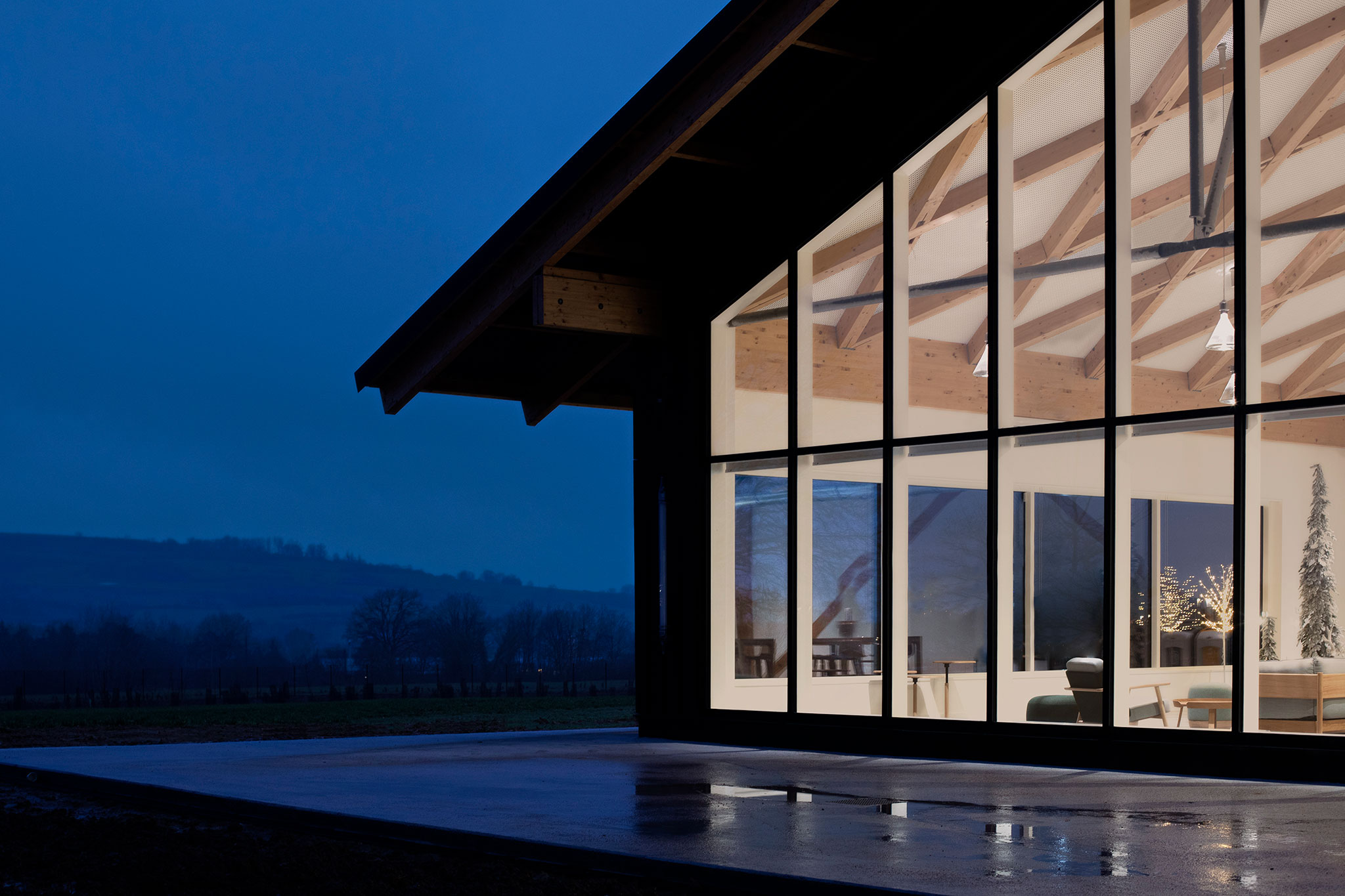
Sormonne Leather Goods by Coldefy. Photograph by Gautier Deblonde.
The Maroquinerie de la Sormonne reflects the ambitions and values shared by Coldefy and Hermès: exemplarity, high standards and quality.
With its architecture combining softness, sobriety and technical sophistication, and its bioclimatic design, the Maroquinerie de la Sormonne embodies the future of the production workshop: a building that promotes the well-being of the artisans it houses, and fits in timelessly, sensitively and virtuously with a preserved environment.














































